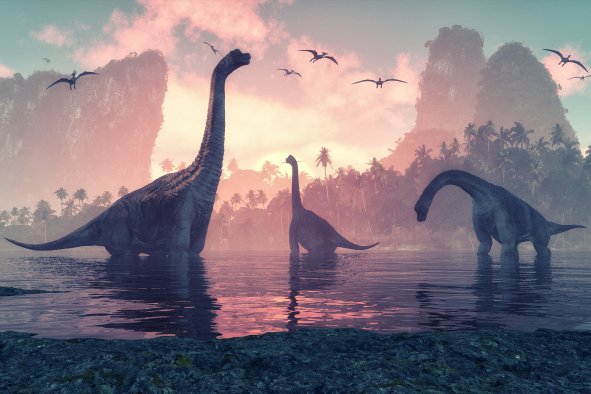Researchers have uncovered fascinating new insights into the world's largest rock engravings, proposing that they may have been intended to mark territorial boundaries.
The pre-Hispanic (or pre-Columbian) engravings, whose precise age is unclear, although they could be prehistoric, are found in Venezuela and Colombia on rock faces along the Upper and Middle Orinoco River.
Since 2015, a research project initiated by José Oliver with the University College London Institute of Archaeology has been trying to understand the pre-Columbian occupation and history of the region.
Researchers have produced a comprehensive database of more than 100 rock art locations in the region—incorporating known sites and new ones—featuring thousands of individual motifs, according to Philip Riris with Bournemouth University in the United Kingdom, one of the archaeologists involved in the project.
"We think it's just the tip of the iceberg as far as rock art is concerned," he told Newsweek. "Sites can just be a single painting or engraving, or they can be several hundred of these motifs—there is a huge range of variation."
In a study published Monday in the journal Antiquity, Riris, Oliver and colleague Natalia Lozada Mendieta with the University of the Andes in Colombia aimed to understand how monumental rock art formed part of the cultural landscape of the Middle Orinoco River.
As part of the study, the team mapped more than a dozen rock art sites that they classify as "monumental"—meaning they stand in a prominent place in the landscape while featuring particular large motifs—using drone photography and other techniques. Some of the sites were already known, although the team discovered several new ones.
The sites contain some of the largest monumental rock engravings in the world, with some measuring more than 130 feet in length.
The engravings include depictions of human figures and giant Amazonian centipedes. Many of the largest are representations of snakes, possibly boa constrictors or anacondas, which play an important role in local Indigenous beliefs.
The largest of all the engravings is a snake at Cerro Pintado in Venezuela that measures about 141 feet (this example was already known to scientists). The team believes it is the largest single rock engraving recorded anywhere in the world.
"These monumental sites are truly big, impressive sites, which we believe were meant to be seen from some distance away," Riris said in a press release.
"We know that anacondas and boas are associated with not just the creator deity of some of the Indigenous groups in the region, but that they are also seen as lethal beings that can kill people and large animals."
In the study, the researchers propose that the large monumental engravings could have been used by pre-Columbian groups as a way to mark territorial boundaries.
"We interpret the monumental rock art as a unique tradition of engraving, which likely emerged in response to a social milieu of intense contact and interaction between diverse Indigenous groups during the pre-Columbian period," Riris told Newsweek.
"They could have functioned as markers of identity, or territoriality—or indeed both; simultaneously warning people whose backyard they were standing in, or signaling that they were among friends."
It is likely that the engravings would have been intended to communicate with a wide range of people from diverse cultural backgrounds, according to the researchers.
"Snakes are generally interpreted as quite threatening, so where the rock art is located could be a signal that these are places where you need to mind your manners," Riris said in the release.
The largest of the monumental rock engravings the researchers recorded—those measuring at least 65 feet up to 141 feet in length—are "unparalleled" in terms of size globally, according to Riris. The size of the largest examples, as well as the sheer number and density of engravings in the region, makes Orinoco rock art a "unique" phenomenon, the researcher said.
Do you have a tip on a science story that Newsweek should be covering? Do you have a question about archaeology? Let us know via science@newsweek.com.
Disclaimer: The copyright of this article belongs to the original author. Reposting this article is solely for the purpose of information dissemination and does not constitute any investment advice. If there is any infringement, please contact us immediately. We will make corrections or deletions as necessary. Thank you.



